
Great Black-backed Gull
| Irish Name: | Droimneach mór |
| Scientific name: | Larus marinus |
| Bird Family: | Gulls |
green
Conservation status
Conservation status
Status
Resident along all Irish coasts. Less frequently seen inland, usually only following storms.
Identification
A large gull and the largest widespread gull to be seen in Ireland. In adult plumage has blackish upperwings showing a broad white margin and darker wing tips showing white 'mirrors ' (white at the very tips surrounded by black); the rest of the plumage is white. Has a bulky body, broad wings, dull pink legs, a very heavy bill and a thick neck. Has four age groups, like Herring gull and Lesser Black-backed Gull, and attains adult plumage after three years when it moults into adult winter plumage. Juvenile, first year birds and second winter birds lack blackish adult like feathers on the upperparts, having instead strongly patterned upperparts which are barred or chequered. Birds at this age can be difficult to tell apart from other large immature gulls. The black develops in older immature birds, usually in the spring of its third year, initially in the mantle and back. Younger immature birds have a narrow tail-band which fades as the bird moves towards maturity.
Voice
Very deep and gruff and similar to other large gulls, such as Herring Gull.
Diet
Fish, waste from commercial fishing, offal, and other birds, for example auks at colonies in the breeding season. Will also rob other birds of food - kleptoparasitism.
Breeding
Breeds on the ground in colonies all around the coast of Ireland. Most colonies are on well-vegetated off-shore islands, or in other areas difficult of access, making the species to census. A few birds breed inland where they associate with freshwater lakes in Co. Mayo and Co. Galway.
Wintering
Resident birds are joined by immigrants in the winter. Found around the coast with some birds inland.
Monitored by
Wintering birds are monitored through the Irish Wetland Bird Survey. Breeding seabirds are monitored through breeding seabird surveys carried out every 15-20 years.
Blog posts about this bird

Urban Gulls, BirdWatch Ireland’s view from the roof-tops
Love them or loathe them, ‘seagulls in the city’, are here to stay.
Firstly, some facts: Seagulls, NO! Just 'gulls', and in summer months in urban areas they can be any of three species: Herring Gull, Lesser Black-backed and Great Black-backed Gull. In the last two decades many of these have ‘moved away’ from their mostly coastal haunts and now can be found almost anywhere in the country – cities, parks, farmland, lakes and reservoirs, coasts, harbours, islands. Herring Gulls and Lesser Black-backed Gulls have taken to nesting on roofs but ‘Greats’ still mostly nest on coastal cliffs and islands. The majority of urban nesting gulls are Herring Gulls.
Herring Gulls traditionally nest along the coast but now commonly nest on rooftops in some urban areas.
Twenty years ago, there were only a couple of hundred urban/roof-nesting gulls – mostly in Dublin City and the north County Dublin towns of Howth, Skerries and Balbriggan with a few more in the south coast fishing port of Dunmore East, County Waterford. Since then, the population has increased dramatically and almost certainly numbers in the thousands of pairs. The National Parks & Wildlife Service have initiated a systematic survey of urban-nesting gulls in spring/summer 2021 and following this we ought to have an idea of the true magnitude of the population increase. On the coasts, a comprehensive national survey spanning 2015-2019, showed that all three species have increased modestly (30-40%) for Herring and Great Back-backed over 15-20 years, whereas the Lesser Black-backed Gull have increased more dramatically (148%) in the same period. Much of the increase in Lesser Black-backed Gulls has been seen on large lakes in the west (again, not seagulls!). These increases suggest that species such as the Herring Gull have recovered from earlier declines which had resulted in them being Red-listed (i.e. of serious conservation concern).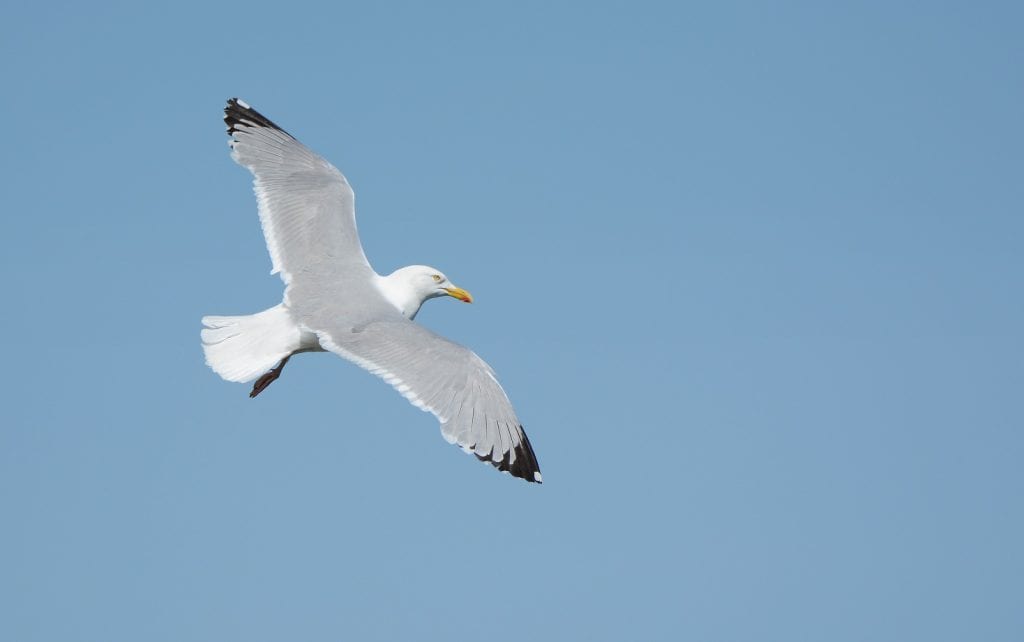 How the urban-nesting gulls ‘interact’ with, or differ from, coastal gulls is a key question that will require some new research looking at movement patterns, diet and feeding ecology, and recruitment of young. Taking these topics individually…
Movements
Dublin is a coastal City with a large tidal river (Liffey) flowing through the middle of it. Do gulls become urban or coastal specialists or do they move regularly back and forth from coastal and intertidal habitats to city parks and streets, eating shellfish one day and discarded takeaway leftovers the next? Resightings of the increasing numbers of individually identifiable colour ringed gulls (by the Irish Midlands Ringing Group) is vital to this. Movements may be driven more by other aspects of behaviour e.g. birds on the streets by day may move to roost in Dublin Bay at night. Deployment of GPS tags and colour ring ‘reads’ will help in this regard.
How the urban-nesting gulls ‘interact’ with, or differ from, coastal gulls is a key question that will require some new research looking at movement patterns, diet and feeding ecology, and recruitment of young. Taking these topics individually…
Movements
Dublin is a coastal City with a large tidal river (Liffey) flowing through the middle of it. Do gulls become urban or coastal specialists or do they move regularly back and forth from coastal and intertidal habitats to city parks and streets, eating shellfish one day and discarded takeaway leftovers the next? Resightings of the increasing numbers of individually identifiable colour ringed gulls (by the Irish Midlands Ringing Group) is vital to this. Movements may be driven more by other aspects of behaviour e.g. birds on the streets by day may move to roost in Dublin Bay at night. Deployment of GPS tags and colour ring ‘reads’ will help in this regard.

Some gulls are 'tagged' with a leg ring, similar to the one above. If you see one, be sure to report it, to help shed more light on their movements.
Diet Are all urban nesting or wintering (in parks etc.) gulls dependent on human waste? Can we do more with local authorities, schools and communities to cut littering and dissuade people from feeding gulls in public parks and other green spaces?
The way we manage our waste is a big factor in the increased numbers of urban gulls in recent years.
Recruitment of young Will a chick reared on a rooftop always go on to breed on a rooftop when it reaches maturity at about 4-years of age? And, ditto for birds reared on islands such as Dalkey and Ireland’s Eye? A very important piece of evidence arose on 24 May 2021 when an opportunistic ring read of an adult Lesser Black-back nesting on Dalkey Island was shown to be one of a brood ringed on the roof of the National Gallery in the heart of D2 in 2017!
Recent research indicates that not all chicks from urban nests return to towns and cities to nest. More research is needed to learn about the relationship between the gulls natural and urban-nesting sites and how they're linked.
Perhaps the most important issue to many city residents is the impact of gulls on human health and well-being. The regularly listed complaints include, food theft (while people eat in the streets and parks), early morning noise (disrupting sleep patterns etc.), physical harassment (by aggressive nest and chick-defending adults); mess from droppings fouling clean clothes on washing lines or on parked cars. There is no magic cure, but one step at a time, we have to make cities less attractive habitat to gulls, and food availability is at the core of this issue. We need to do more, individually and collectively to reduce this via changes in personal behaviour, refuse collection strategies etc. We are not going to make roofs less attractive nesting sites (without great structural expenditure) but if we reduce food availability then numbers ought to decline in the long-term.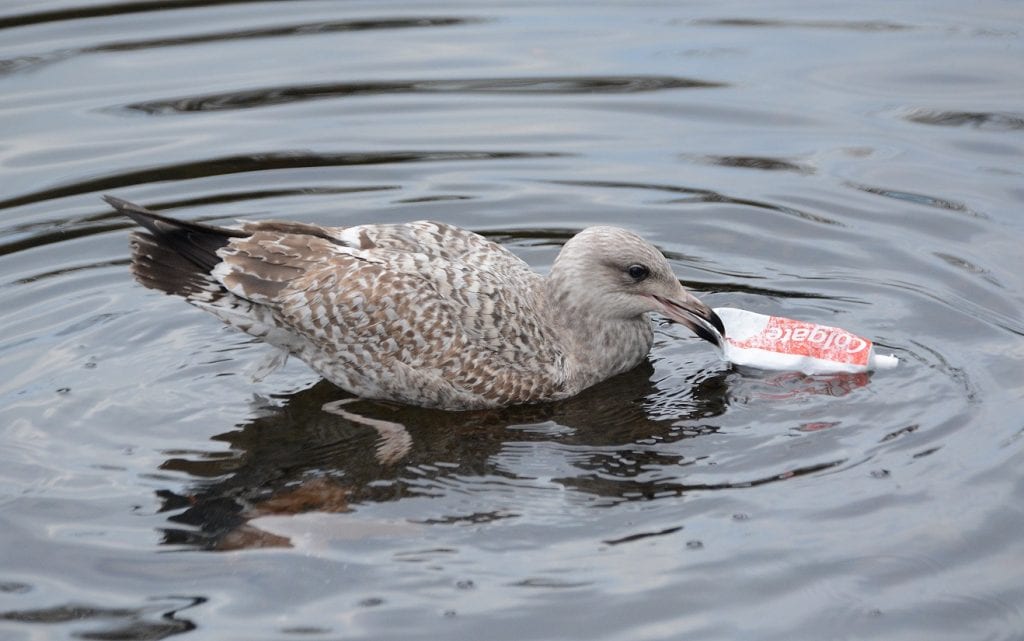
A young gull tackles a toothpaste tube in St. Stephens Green in Dublin - a sign that we need to manage our waste and rubbish better.

Too Close for Comfort - BirdWatch Ireland remind everyone not to photograph bird nests this summer
Looking at a bird nest in close quarters risks disturbing the parents, causing chicks to prematurely leave the nest, and increases the risk of a predator finding a nest.
It’s always an exciting moment when you realise you have birds nesting in your garden, or when you’re out for a walk and spot a bird dashing into a hedge with nest material or food for their young. Of course, bird nests are quite mysterious, with their often-hidden locations and intricate designs, and the prospect of watching the progress from nest to eggs to chicks to fledglings is a tantalising one – a rare glimpse into an important part of the lifecycle of your favourite species. Similarly, thousands of people look forward to the Swallows returning to their sheds year after year, and hopefully rearing multiple successful broods before their return trip to Africa. Unfortunately, though, by looking into that nest, or trying to get some photos to share with family, friends and social media, you could be putting the nesting attempt at risk of failure. And nobody wants to do that! So please, resists the temptation to peek into any nests this summer, but rather watch the adults coming and going from a safe distance, and keep your eye out for healthy fledglings a few weeks later!
A lot of people don’t realise that it’s actually illegal to disturb and/or photograph nesting birds, without a specific licence from the National Parks and Wildlife Service. “Under Section 22 (9)(f) of the Wildlife Act, 1976 (as amended) a licence is required for a person to take… video/pictures of a wild bird of a species… on or near a nest containing eggs or unflown young”. This is a good law and is in place with the best interests of the birds in mind.
Please don't go near nesting birds, eggs or chicks - wait for them to fledge and there'll be loads of opportunities to see them!
So, what are the risks? Well first of all, the adults will likely leave the nest as you approach. This means that eggs that need to be incubated, or chicks that need to be kept warm, are exposed and will rapidly lose heat, putting them at risk. If the chicks are more than half-grown, you might find the adult isn’t on the nest as you approach, but your presence will prevent them from feeding their chicks – and those chicks need a lot of food every day if they’re going to fledge successfully! As chicks in the nest get older, there’s a risk that you will cause them to ‘explode’ from the nest. The chicks see you as a predator, so when you approach the nest they think their time is up – so they take a risk and jump from the nest, in the hopes of escaping. By causing them to fledge too early, you’re greatly decreasing their odds of survival. It’s important to remember that birds see humans as predators, so they act accordingly by trying to escape from the predator. In the natural world, there’s nothing good about a large animal trying to seek out your nest – it can only be a bad thing!
In some cases, you might approach a nest and the parent bird stays sitting on it. A lot of people take this as a good sign that no disturbance has been caused and that the bird is content with your presence, but that’s not the case! There are studies that show that birds who remain on the nest like this have greatly elevated heart rates for several hours afterwards. So, they were very stressed as you approached, but they were hoping that by not moving they wouldn’t give away the location of their nest.
A Swallow gathering nest material.
Lastly, even if you’re in and out quickly – no chicks jump the nest, and the adults return quickly, there can still be disastrous consequences. By approaching a nest, you can give away it’s location to potential predators – cats, Magpies, foxes, dogs, etc. – will either have seen you check the nest and think, “I wonder what they were looking at?” and remember to do their own investigation later, or by approaching the nest you might leave a trail of flattened grass or move branches or briars out of the way, all tipping off potential nest predators too.
So, without wanting to fearmonger, you can potentially put birds and their eggs/chicks in jeopardy by poking your head in to have a look or try and get a photo. But you’ll put them at no risk by observing them come and go from several metres away, and you’ll hopefully have some fledgling chicks to look forward to seeing in a few weeks’ time. So why risk it?!
Nestbox cameras provide the best of both worlds and are perfectly safe and legal if they’re installed early in the year before the birds starting nesting in them. Nests should only be ‘inspected’ by people with the right training and licensing, who are gathering scientific data to advance our understanding of the species in question, with a view to improving conservation efforts.
A nestbox camera, that you've installed before the breeding season starts, is a great way to monitor your nesting birds without causing them any disturbance.
If you happen accidentally to disturb a nest, the best thing to do is to leave the site immediately. If the chicks jump, and you can safely return them to the nest, then try to do so, but if that’s not possible, putting them somewhere close by in a tree or hedge is the best thing to do. They stand a much better chance of survival if their parents look after them than if they have to be taken into human care. In extreme cases, contact the Irish Wildlife Hospital (http://wildlifehospital.ie/) for advice, but try the above steps first. It’s better to leave them be and watch from a distance to see if the adults return to them than to put them in a box first and ask questions later.
If you see a fledgling on the ground, don't pick it up - watch for an hour or more to see if the adults are tending to it. If they are, leave it be.
So, regardless of the law, and no matter how careful you are, it’s really down to ethics and the birds’ welfare being paramount. For this reason, we don’t ‘like’ or share any photos sent to us of birds’ nests or chicks. Even if your photo was taken from 20 metres away with the longest lens money can buy and no disturbance was caused, we feel it’s best not to share these as it may encourage others (who haven’t read this article!) to go get their own photos of their nesting Robins or Swallows, and so the knock-on effects simply aren’t worth it.
Play it safe at Seabird Colonies
Arguably the greatest example of this sort of issue is in seabird colonies, such as Great Saltee in Wexford, Ireland’s Eye in Dublin, and others. These islands are easily accessible and provide a fantastic opportunity to see large numbers of amazing seabirds coming and going during the breeding season. Indeed, those of us lucky enough to have done so can probably still remember the first time we saw a Puffin or the sights and smells as we approached a large Gannet colony. Allowing visitors to access these islands is undoubtedly a good thing as it engages people with seabirds, birds and conservation. It makes them care about wildlife, and we need more of that!Unfortunately, most people don’t realise when they’re causing disturbance in these colonies, and what can look like a fantastic photo of a Gannet, Puffin, Shag or Guillemot might actually be illustrating a bird that is very stressed and in fear for its egg or chick. As above, there’s research on seabirds that show that they have elevated heart rates and stress levels for hours after a human has approached their nest, even though they didn’t fly off and, on the surface, might appear to have been happy to tolerate the human. So, just because a bird is sat on its nest as you approach doesn’t mean that it’s happy for you to do so. Really what they’re thinking is that they’ve put months of work into getting to this stage of nesting, and they don’t want to give that up unless they absolutely have to. Remember, as far as that bird knows you’re a predator!
 People frequently get much too close to nesting birds at seabird colonies around the Irish coast.
People frequently get much too close to nesting birds at seabird colonies around the Irish coast.
A recent study by Debs Allbrook of UCC found that Gannets nesting on the edge of the main colony on Great Saltee were disturbed the most and had the lowest nest success rate. She also found that it was photographers who ventured the closest (2.6m on average). Many photographers go out to the Saltees armed with huge lenses with eye-watering zoom capabilities, and yet the evidence still shows that this doesn’t result in them sitting further back to get these photos – many still go much closer than they should. The resulting disturbance lead to nest predation by gulls and a waste of months of effort on the part of the Gannets. That wasn’t the gulls’ fault, it was the humans’! Thankfully, Debs’ research also involved the installation of a sign near the Gannet colony, informing visitors to maintain a distance of at least 6m from the nesting birds, and this seems to have improved the behaviour of photographers and other visitors, and resulted in less disturbance as a result. (Note: this distance is suitable for this species and this location but is not a universal constant for all seabirds and all colonies, so learn to read the signs of disturbance and behavioural disruption.)

Debs recently summarised her important research in our Wings membership magazine (Summer 2021 issue) and we've that article free to view for non-members too, by clicking this link.
The full peer-reviewed study in the Journal for Nature Conservation can be read by clicking here.
A sign has been erected on Great Saltee, based on Debs Allbrook's research, to encourage best behaviour near the nesting Gannets.
Puffins nest in burrows, and after a couple of hours at sea gathering sandeels and sprat they want to fly straight back to their burrow and feed their chicks immediately. If you’re finding that a Puffin is walking around near you, sandeels in bill, seemingly not bothered as it poses for photo after photo, then it’s likely that you’re the reason it’s not returning to its burrow. Basically, if you’re finding it relatively easy to get photos of seabirds, then consider that it might be a bit too easy and you might be unintentionally disturbing the bird in a way that isn’t immediately obvious to you.
All of the above goes for the other seabirds too – Guillemots and Razorbills on the cliffs, Shags nesting between or under boulders, and even gulls nesting on flat and grassy areas of these islands. Gull chicks will run away at the sight of people, and this often results in them running off the side of a cliff, or running towards the nest of another gull, who will attack the intruder.
Learn to spot the signs of disturbance, which can vary between adults flying away from the nest, to a parent bird sitting tight but becoming agitated.
It’s true that seabirds on islands that regularly get visitors can become more habituated to human presence than islands where people never visit, but this still requires a certain minimum distance to be maintained. And many photographers go out to these islands every summer, maintain a healthy distance from birds and their nests, and still come away with stunning photographs! So, don’t be discouraged – just be aware! Learn to spot the signs that your presence is stopping a nesting bird from going about its business as it normally would. It’s inevitable to accidentally ‘flush’ (cause to fly away) a bird when you’re walking around a seabird island or to cause a bird with a food delivery to circle the nest site rather than land, but the important thing is to take these as signs to retreat and ensure the bird can get back to its nest site as soon as possible. Don’t kick yourself when this does happen but use it as an educational moment and vow to avoid making the same mistake twice.
So, here are the key points:
- Don’t seek out nests or photograph them. Just because no harm is intended, doesn’t mean harm isn’t caused.
- You can get a license to photograph a nesting bird from the NPWS, but this doesn’t confer on you the right to disturb the birds in the process.
- Nest visits should only be carried out by people who are trained and licensed to minimise the risk, and in order to gather scientific data that is important to the monitoring and study of the species in question.
- Take the chance to enjoy the birds around you, visit a seabird colony this summer, and take lots of photos, but be sure to keep your distance from the birds and their nests!
Some below for some interesting articles on this topic from other websites and organisations:
Do’s and Don’ts of Nest Photograph (Audobon Society)
Unwitting Tourists Cause Gannet Nests to Fail on Saltee (UCC)
Birding Ethics & Practical Guidelines (incl. Photography) (WorldBirds)







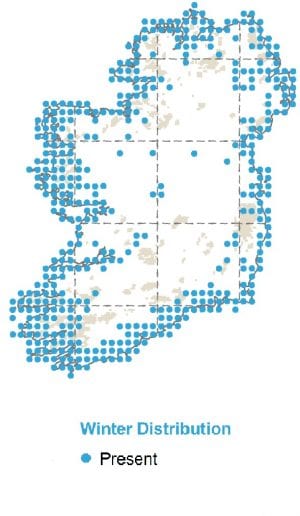


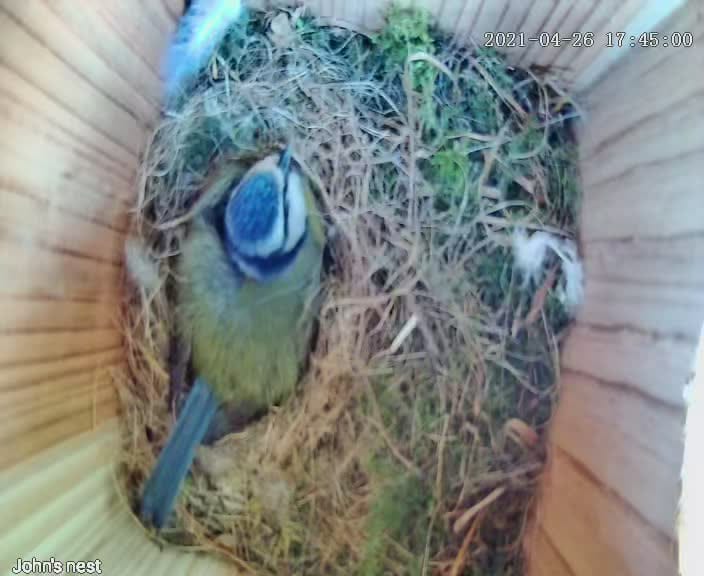
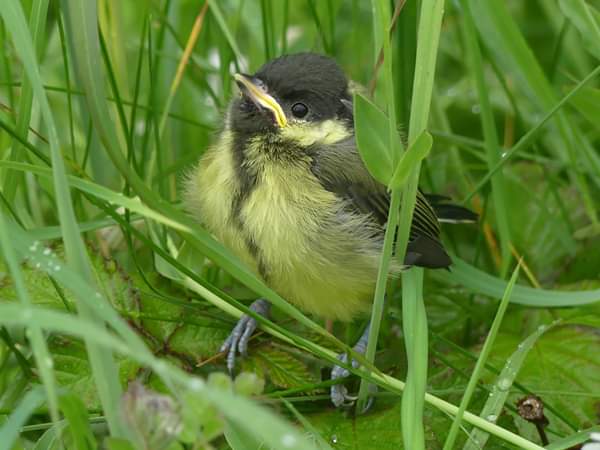
 People frequently get much too close to nesting birds at seabird colonies around the Irish coast.
People frequently get much too close to nesting birds at seabird colonies around the Irish coast.


